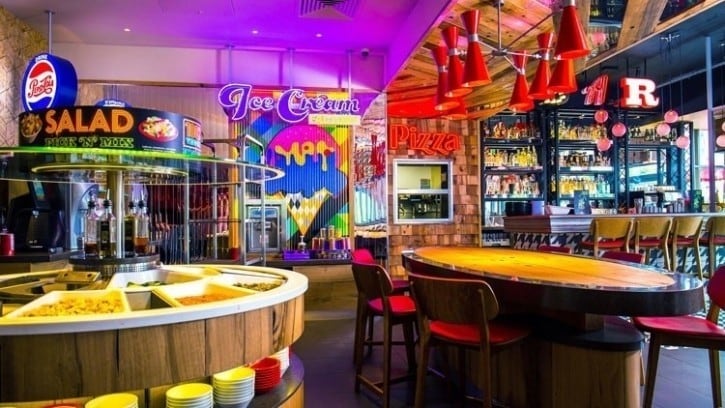It is ironic that just as US-style pizza is having a moment in this country, whether that be the New York style pizzas served by Manchester’s Nell’s Pizza, 5 Boroughs Pizza in Winchester, or by countless places in the capital; Chicago style pizza from Little Earthquakes and Japes; or even the emergence of more tertiary style such as New Haven and Detroit, that the OG of American pizza restaurants just announced that it was closing more than half of its restaurants.
Just 64 Pizza Hut restaurants remain open following the closure of 68 sites after DC London Pie Limited, a franchise operator of Pizza Hut dine-in restaurants across the UK, went into administration. New owner Yum! Brands has taken these restaurants under its wing, and while their number is nothing to be sniffed at, it marks a sizeable decrease in the scale and power of a brand that has operated on these shores for more than 50 years.
Much will be spoken about the nostalgia that surrounds Pizza Hut when discussing the reaction to the closures - of its bottomless buffets and heavily top loaded ice cream sundaes - but if there’s one thing I’ve learnt writing about restaurants for more than 20 years is that misty-eyed sentimentality accounts for very little in the dining out sector (Cracker Barrel’s embarrassing failed logo revamp in the US being the exception that proves the rule).
The stark truth seems to be that while the UK has been going through a pizza revolution over the past few decades, led predominantly by the rise of Neapolitan style pizzerias such as Franco Manca, Pizza Pilgrims, and Rudy’s, Pizza Hut, with its deeper dish American-style pies and Americana designed restaurants, has been left lagging behind. Moreover, when it was the turn of US-style pizzas to once again shine, the brand’s heritage and family-friendly approach failed to chime with the younger generation of pizza lovers who were driving this trend (the fact most of its sites are based in out-of-town retail parks won’t have helped in this regard either).

That’s not to say Pizza Hut hasn’t tried to stay relevant. Last summer it launched a hand-crafted pizza menu, replacing its classic dough with sourdough style bases that were hand-stretched in-house (23,000 practice pizzas were stretched in preparation for the launch), and its Big New Yorker pizza, cut into oversized, foldable slices, tapped into the trend for thinner New York style pizza over here. But it clearly wasn’t enough. At the start of this year the brand was bought out of administration in a pre-pack deal, and 10 months later it finds itself in its current position.
If there’s one thing I’ve learnt writing about restaurants for more than 20 years is that misty-eyed sentimentality accounts for very little in the dining out sector
So, what of Pizza Hut UK’s dine-in future? With Taco Bell and KFC also in its portfolio, new owner Yum! Brands is no stranger to operating large restaurant brands and the jettisoning over more than half the estate shows that it isn’t afraid to make decisive moves and restructure. Yet it faces an unenviable task because not only is it competing against the raft of new pizza players that have opened up in the past decade it is competing with itself in the form of its Pizza Hut delivery operation. Indeed, US brands such as Papa Johns and Domino’s have dominated this space without seeing the need to open full-service restaurants and questions will remain over whether there is a demand any more for the consumption of these style of pizzas anywhere else but in the home.
Yum! Brands clearly believes there is, but it will no doubt be faced with a dilemma on which levers to pull to make this happen. Does it double down on its American nostalgia - an approach that hasn’t seemed to have worked in recent years - and try to attract more families, people who were familiar with the brand’s heyday who want to give their children a taste of it, or does it look to the current trends and try and attract a younger, more discerning and adventurous crowd? Whichever it chooses, it might take significant investment in terms of restaurant design, menu changes, and the marketing message. Whether it will be prepared to put its hands in its pockets at a time of uncertainty for the UK restaurant sector as a whole will be telling.
Is Pizza Hut UK’s dine-in business, like its crust, stuffed, or can it rise like its dough? The answer, I suspect, will not be long in coming.

